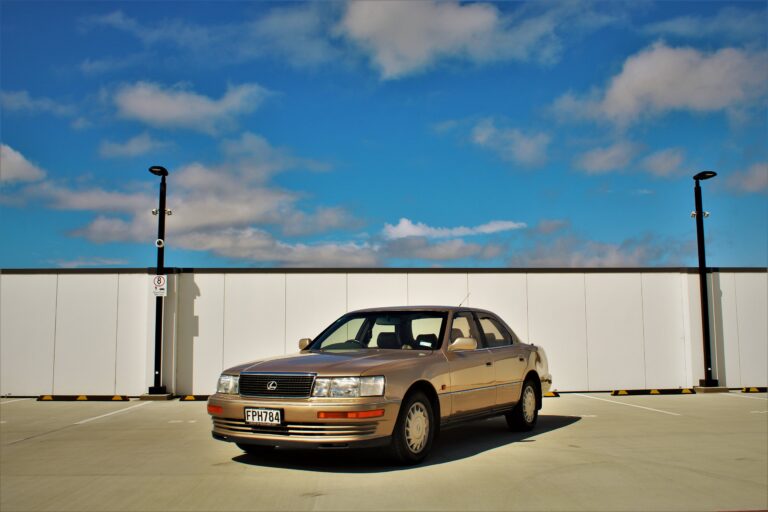A house painter by trade, Clint Wheeler applied his eye for detail to his latest creation, an uber-rare ’62 FJ panel van
By Ashley Webb, photos Richard Opie

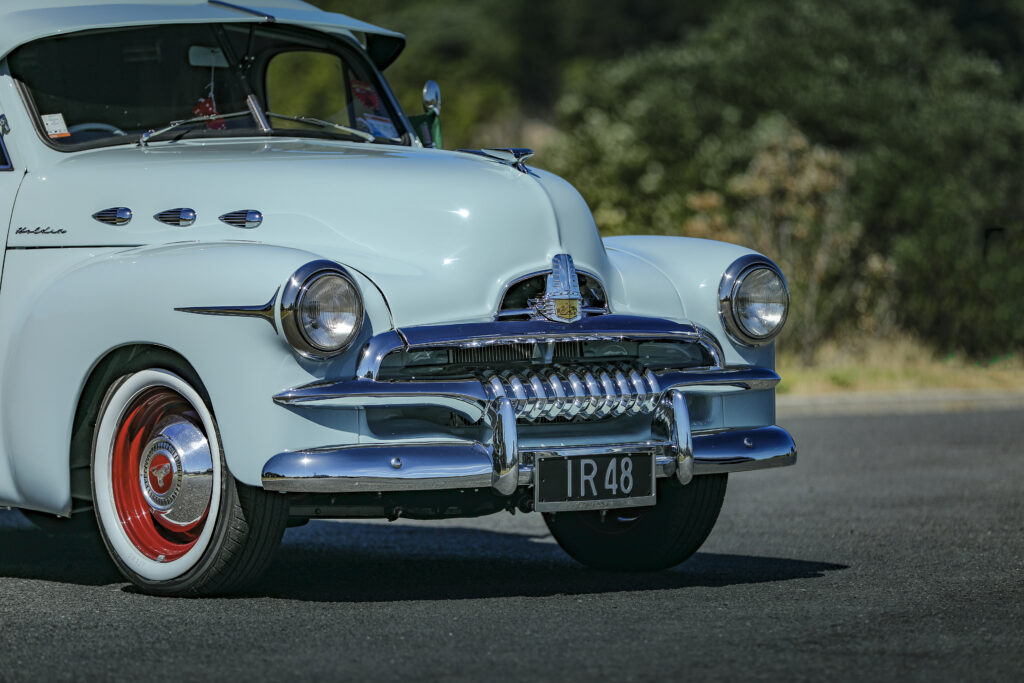
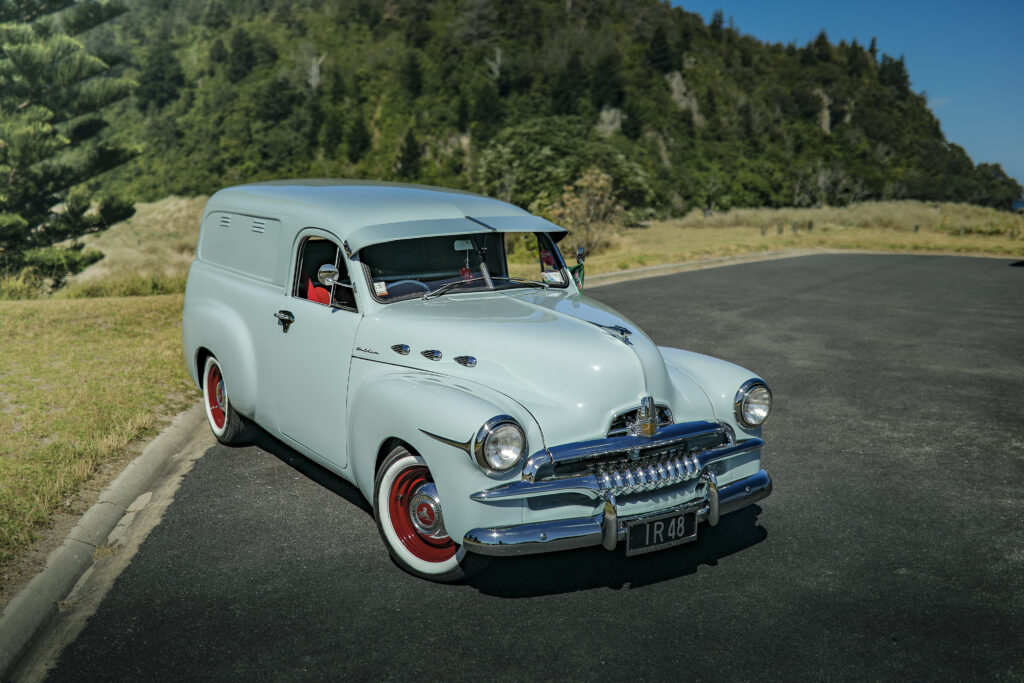
Almost 75 years ago the first FX Holden was driven out of Holden’s Fishermans Bend assembly plant at Port Melbourne to become Australia’s most loved car. Aussie’s homegrown auto, a reworked American design, became the country’s first successfully mass-produced car. It had pretty good performance too, for a low-cost, four-door family sedan. It proved so popular that prospective buyers were literally queuing up at local Holden dealerships to place their orders. The recipe for success had been set in stone: the generous dimensions and trusty 6-cylinder, rear-wheel-drive power plant set the platform for the majority of cars sold in Australia over the next 25 years.


Bright and bubbly
The much anticipated FJ Holden came on the market in 1953. Known at the time as the ‘New Look’ Holden, the FJ was pretty much a revamped version of the FX released in 1948.
Using similar mechanicals, but with a slight increase in engine power, upbeat styling, and significantly more chrome up front, the FJ oozed a brighter, more bubbly personality compared to its more serious predecessor.
It wasn’t hard to love the FJ with its shiny, broad, toothy grin of a grille, stylish two-tone paint job, bright chrome work, and perky little tail fins that offered a taste of Detroit fashion. However GM-H thought the American designed interior was a tad too gaudy for the local market, and also decided it would be too expensive to produce, so set about creating a more conservative interior for the Australian market.
By the mid-1950s as car ownership became affordable for the working class many Australian families taking to the road for the first time were happy to choose the locally built FJ, which was built from 95 percent Australian content. GM-H manufactured all the major mechanical components including the engine, transmission, and rear axle assembly, along with all the forgings for steering and suspension systems in-house. The body was made from local BHP steel, as were all other stamped metal items used in the manufacture of the car.
At various times, GM-H’s manufacturing plants built a variety of body styles. For example, the original Holden sedan was only produced at Woodville. A coupe/utility model was added in 1951 and by 1953 a second manufacturing plant had come on-line at Pagewood and both body styles were produced at both locations while all vehicle assembly plants across the country completed both the sedan and utility. In July 1953 a business sedan completed the lineup, however this model was only manufactured at Woodville. A panel van was added to the FJ range. These van bodies were only manufactured at Woodville.
The FJ Panelvan was a success with local business and tradesmen. An option 265 van was also available and was commonly known as a baker’s van. The FJ was also the first car produced by Holden to be exported to our shores.

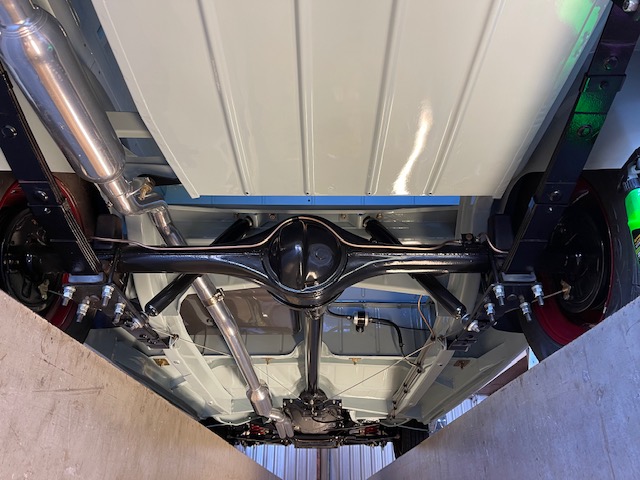
Basket case
Clint Wheeler purchased this 1962 Holden FJ Panelvan as an unfinished project, or as he says “a complete basket case”. Collected as nothing more than a bare shell, the rotisserie-mounted and primed shell travelled the length of the country from the Rangiora garage where it had sat dormant for six years to Clint’s Ruakaka workshop. “Mike, the previous owner, was awesome. He stacked the van and parts nicely. I was pretty excited to get the van up north. We cut the locks and got her out to enjoy the northland sun,” says Clint. “The panelvan also came with boxes of assorted parts, some good, some not so good, but they all helped.”
After more investigating Clint had to accept the task of getting his latest project back on the road would be nothing less than epic. For starters, there was literally no floor or ‘X’ member to mount the subframe and the body required new inner and outer sills. Fortunately, Clint found an FJ ute for sale that made the ideal donor vehicle. It proved to be extremely helpful for identifying the location of various items, such as the gearbox tunnel.
Clint knows of only seven panelvans in the country, and this is the only road-going one, which made sourcing missing pieces a challenge — the search frequently sent him across the Ditch, using the power of the internet to source parts on Holden forums. It was also a real head-scratcher to even know what parts were missing, but thankfully those same internet sources came to the rescue with the needed reference imagery.
“I was lucky my retired panel beater completed the job as it was much bigger than we imagined,” says Clint.


Eye for detail
As with all of Clint’s cars, good mate Goose is responsible for the paintwork. “I can say without Goose’s input, and incredible eye for detail, the van would never be as good as it is now. It’s good to have another fussy bugger to bounce ideas back and forth and come up with a winner,” says Clint. Unlike many old Holdens, the rust in this one wasn’t too bad, requiring only a few patches, plus it had survived having the rear side windows cut out of it. “We decided on a modern VW colour called Aquarius Blue as it’s not far from the original colour, and it suits the ’62 tin to a tee. To make the colour really pop we went for the red interior with matching rims. As house painters we were going for the indoor-outdoor flow,” says Clint. If you think this award-winning paint job was created in a state-of-the-art spray booth, then you’d be sadly mistaken, as all painting was done under Clint’s $100 Warehouse gazebo. “Kinda like how it was done years ago before spray booths,” says Clint.
Who built what, when
GMH had assembly plants in five States and its share of the booming vehicle market rose from 20 percent in 1950 to 50 percent in 1958.
Holden Car Manufacturing (Body Assembly) Plants
- Woodville – 1948 until 1965
- Pagewood – 1952 until closure in 1980
- Dandenong – 1956 until beyond HZ production
- Elizabeth – 1965 until beyond HZ production
- Acacia Ridge – 1966 until beyond HZ production
Holden Car Vehicle Assembly Plants
- Fishermans Bend – 1948 until 1956
- Birkenhead – 1949 until closure in 1962
- Fortitude Valley – 1949 until closure in 1966
- Mosman Park – 1949 until closure in 1972
- Pagewood – 1949 until closure in 1980
- Dandenong – 1956 until beyond HZ production
- Elizabeth – 1962 until beyond HZ production
- Acacia Ridge – 1966 until beyond HZ production



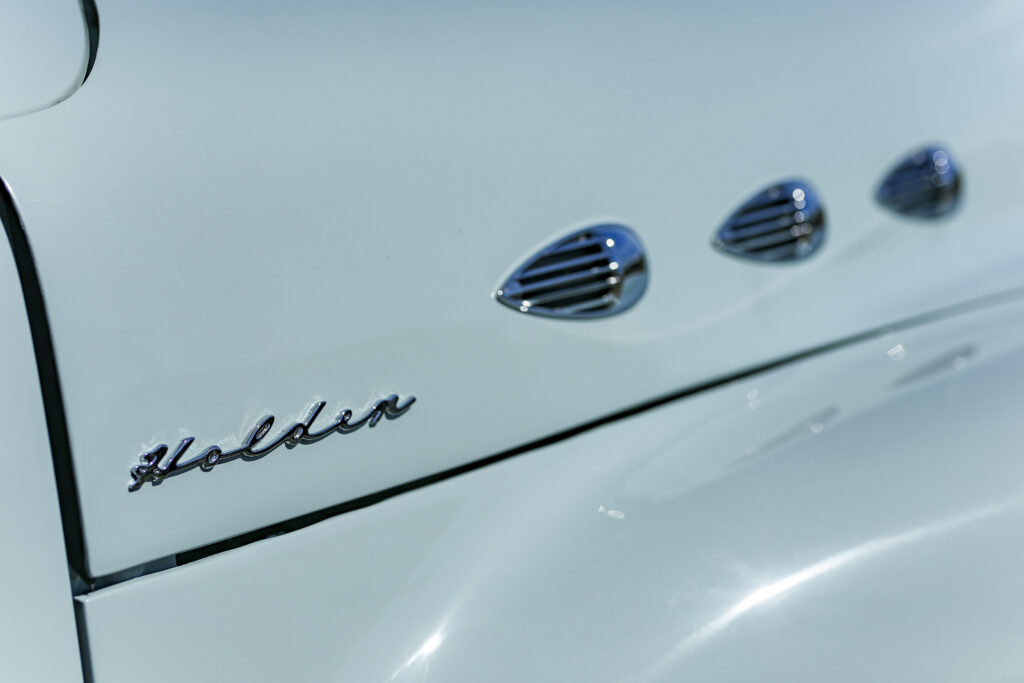
Nailed it
The FJ was completed in what Clint describes as ‘stock custom’. “I was wanting a mild custom drivetrain with a slick look and not over cooked,” he says. “I think we nailed it, and it’s also easy to make original again without too much fuss.” It’s an all-period affair complete with period speed parts — again sourced across the Ditch. The engine is a later model EK Holden 138ci straight six, which Clint purchased as a fresh factory rebuild, boasting twin carbs, headers with custom side plate and rocker cover, all sourced from Oz Speed Spares in Australia. The wiring loom was another Aussie-based score, a reproduction of the factory loom. The only other modifications are the two-inch lowering job and the factory steel wheels, which have been made a touch wider.
All the mechanical and reassembly work was completed by Henwood Automotive in Whangarei. “They did another fantastic job for me,” says Clint. “I didn’t think Dave would do another after the chopped EK van. He hates it when I tell him I have a new project.”
Rarity of the model aside, the fact the FJ had a paper trail and its original New Zealand plates meant it could be reFined and once again don the black registration plates was a huge bonus for Clint.


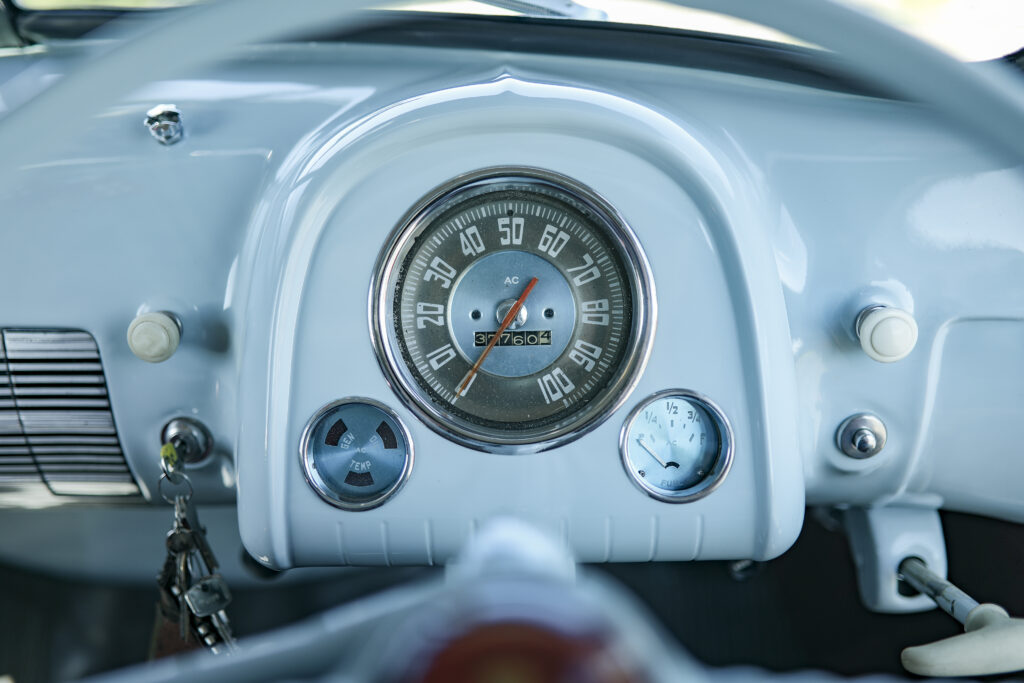

All worth it
“It’s great to see people’s faces and reactions when they see the van, it makes it all worth it,” says Clint. “I hope my van inspires others to get theirs on the road. I got loads of inspiration from the FJ Facebook pages and also got plenty of help from over the Ditch. Without those guys it would have been extremely difficult to go forward on the van.”
Clint would also like to say a big thanks to Shane Whitehead. “He’s such a top bloke and would even take parts off his own car and hand them to me,” says Clint. “Also thanks to Howard Thompson again for another superb job, also based in Whangarei.”
Despite its understated nature, the FJ drew huge crowds all week long at Repco Beach Hop. We’re told Clint even received an offer to sell, but the van will be staying in Clint and wife Sheree’s hands for now, with a huge South Island tour coming up this summer.
The FJ has indeed become a celebrated Australian icon and, in fact, the trusty FJ undoubtedly played its part in cementing Holden’s place as building Australia’s most popular car. Today, Holden lovers, restorers, and those wishing to modify this iconic classic recognise those unmistakable era-defining chrome grille and stylish monogrammed hubcaps. Indeed, that distinctive front grille assembly has since made the FJ one of Australasia’s most familiar faces.
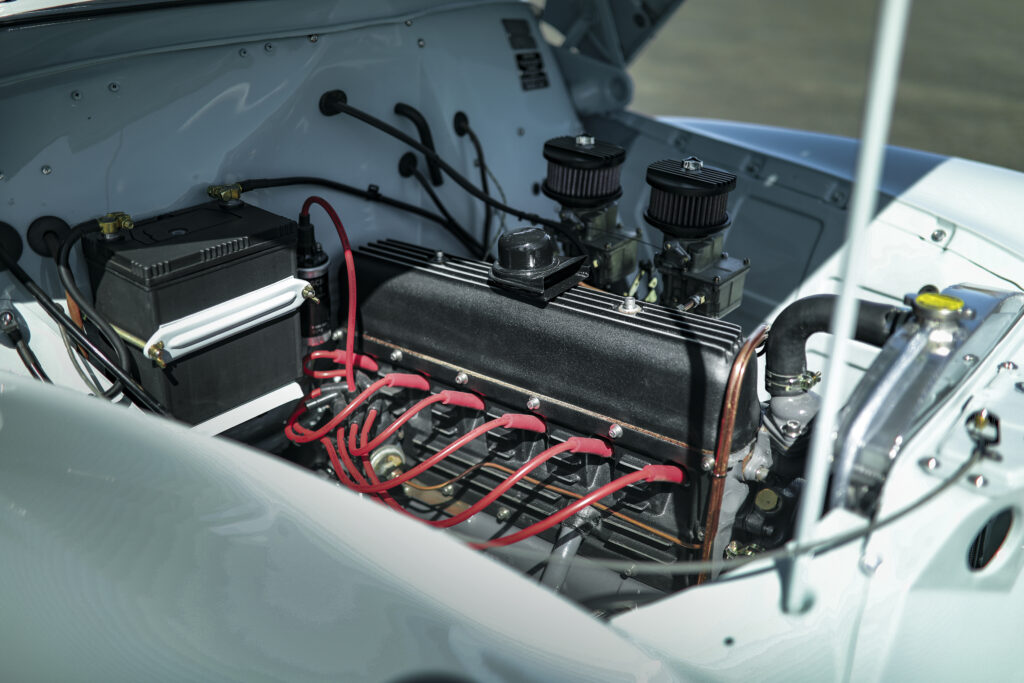

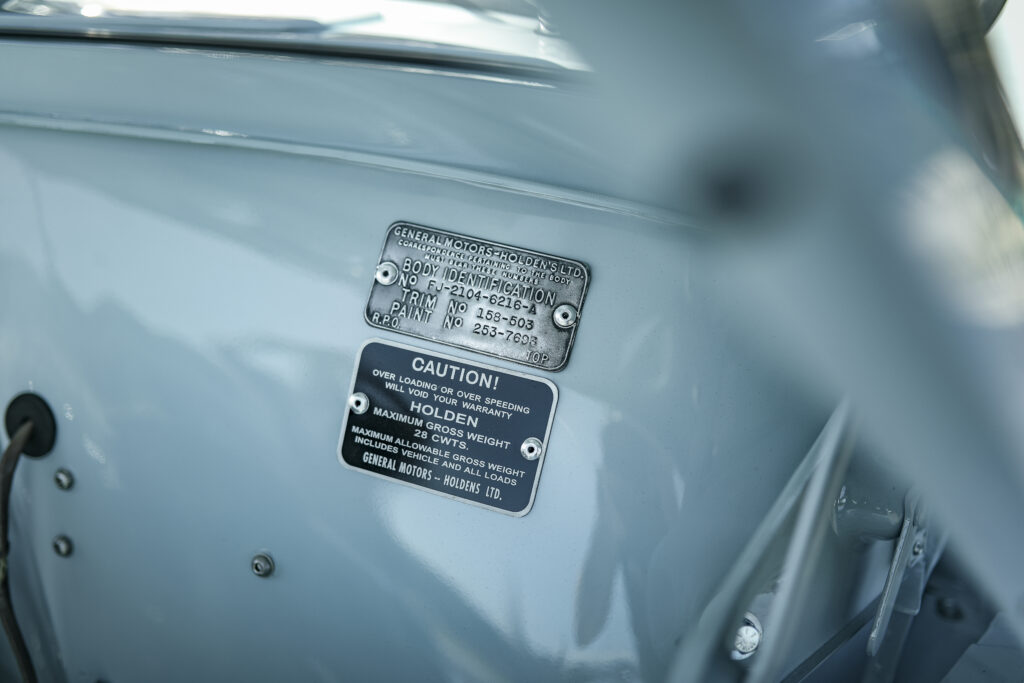

1962 Holden FJ Panel Van
Engine: Holden EK 138, straight six-cylinder (as featured)
Capacity: 138 cubic inch (2261cc) (as featured)
Fuel System: Twin side draft carburettors (as featured)
Suspension F/R: Short and long arm independent type with King coil springs/ Hotchkiss Drive with reset semi-elliptic springs
Steering: Worm and sector
Exterior Dimensions
Length: 173.3 inches (4401mm)
Width: 66.9 inches (1702mm)
Height: 62.3 inches (1581mm)
Wheelbase: 103.0 inches (2616mm)
Front Track: 53.0 inches (1346mm)
Rear Track: 54.0 inches (1372mm)


